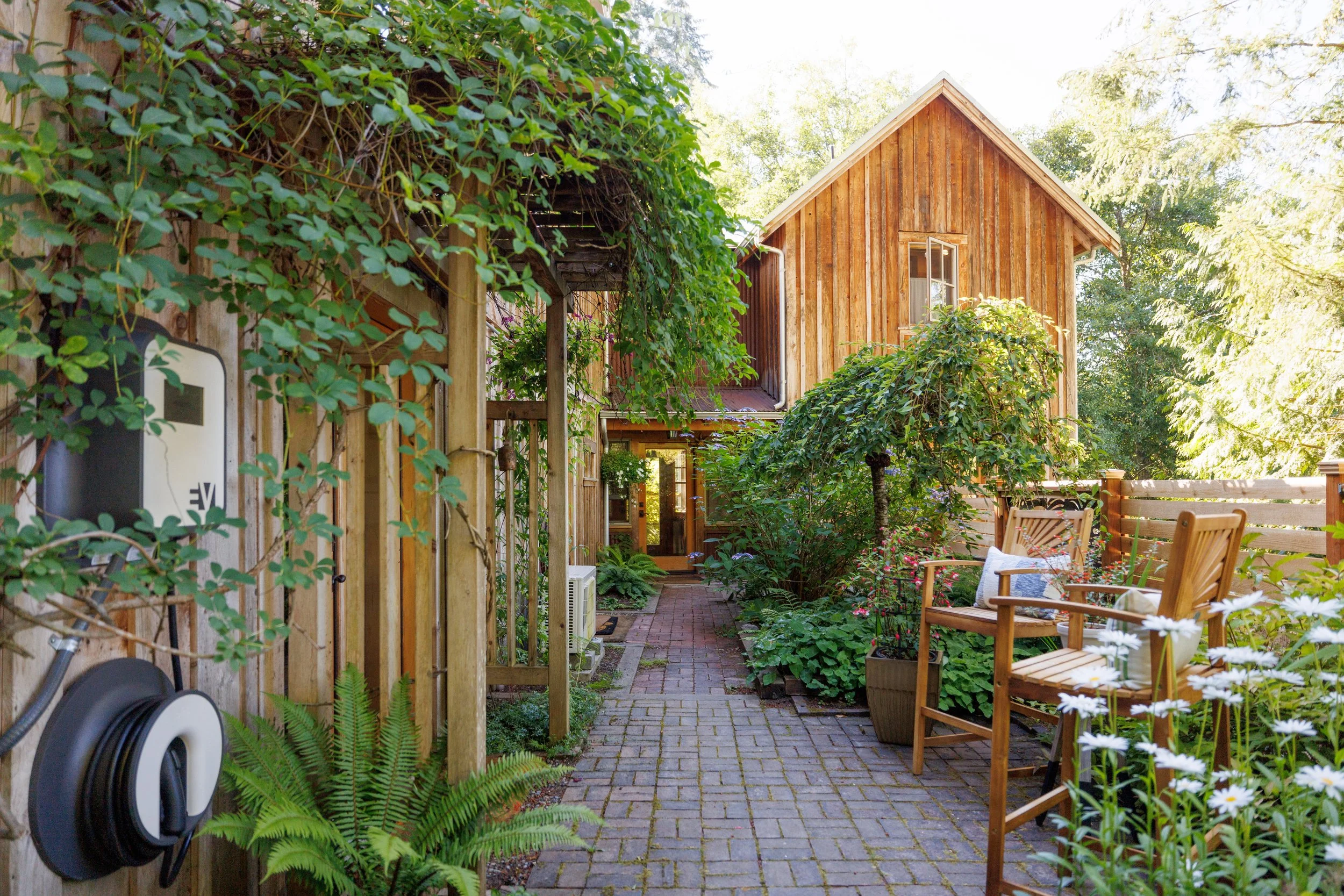The Reimagined Home as Sanctuary Guide: Living Regeneratively Begins at Home
We recently published a reimagined edition of Home as Sanctuary — a guide written by Latitude’s founders, Alissa and Neal Collins. First created as a foundational resource to help define what regenerative real estate means in practice, the guide has evolved over the years into something deeper: a philosophy and framework for living regeneratively, beginning at home.
Home as Sanctuary was born out of years of conversation — and one central question that continues to guide our work: What is regenerative real estate, and what does it mean to live regeneratively?
Over time, we found many ways to answer.
It’s giving back more than you take.
It’s living in reciprocity with the land.
It’s caring for the more-than-human world.
It’s recognizing that you live in nested systems of interconnection.
Each definition held truth, but the words themselves felt incomplete—and sometimes, a little too wrapped in jargon. Again and again, one word surfaced that seemed to capture the essence of what we were reaching for: sanctuary.
Why Sanctuary, and Why Now
The word sanctuary has long held two meanings — a consecrated place, and a place of refuge and protection. Both feel deeply relevant now.
We’re living in a time of overlapping crises — ecological, cultural, and personal. Our systems are strained, our pace is relentless, and many of us feel a quiet fatigue that runs deeper than we know how to name. Amid that backdrop, the act of creating sanctuary — cultivating spaces that ground, nourish, and restore — becomes essential.
To create home as sanctuary is to engage both the visible and the unseen: to design and live in ways that generate life rather than deplete it. It’s not about perfection or performance; it’s about participation — showing up for the small piece of Earth we call home and remembering that how we tend it shapes how we tend everything else.
In this way, sanctuary becomes both place and practice. It reminds us that the sacred is not separate from the everyday — it’s present in how we cook, gather, design, and care for what surrounds us.
The Link Between Personal and Planetary Vitality
We created Home as Sanctuary not as a checklist, but as a framework — a way to help people root regeneration in daily life. Because the truth is simple: our personal well-being and the well-being of the planet are inseparable. The more nourished we are, the more capable we become of bringing regenerative ideas into form.
This understanding has echoed for generations among those who study the living systems that sustain life. One such thinker, Rudolf Steiner, foresaw the world we now inhabit — a world where industrialization and chemical agriculture would dull both soil and spirit. His response, biodynamic agriculture, was both ecological and spiritual: a way of cultivating soil and food as living organisms to restore relationship and balance between people and the Earth.
Steiner’s ideas continue to offer a lens for contemplation — a reminder that regeneration is not only about restoring ecosystems, but about rekindling the inner will and creative forces that make true stewardship possible.
A Framework for Regeneration
Within Home as Sanctuary, we share tools to help you begin this work — starting with the Five Roots of Regeneration. These roots form the foundation of regenerative real estate: the essential conditions that give rise to resilience and vitality in any environment.
Health & Wellness — Creating spaces that actively promote physical and mental well-being through clean air, water, materials, and design.
Sustainability — Designing living environments that work with natural patterns to minimize resource use while maximizing comfort and abundance.
Community — Fostering the social connections that make us resilient, creative, and fulfilled as human beings.
Ecology — Recognizing our role as stewards of living systems and creating homes that support biodiversity and ecological function.
Spirit — Honoring the deeper meaning of home as sanctuary and creating spaces that nourish our souls.
Together, these roots ground the philosophy of Home as Sanctuary and offer a starting point for deeper exploration. In the guide, they branch outward, bringing the framework into form through practical and soulful ways of living regeneratively.
A Living Invitation
Creating home as sanctuary is not a single act but a lifelong relationship — one that grows as we do. When we approach home as a living system, capable of connection, renewal, and transformation, everything begins to shift.
Your actions, buoyed by what inspires you within the Five Roots of Regeneration, truly matter. Each step you take — no matter how small — contributes to the living network of homes, communities, and places regenerating the world from the inside out.
Because true regeneration doesn’t begin somewhere else.
It begins right where we are.
Download the guide to explore the roots — and see how they come to life.







